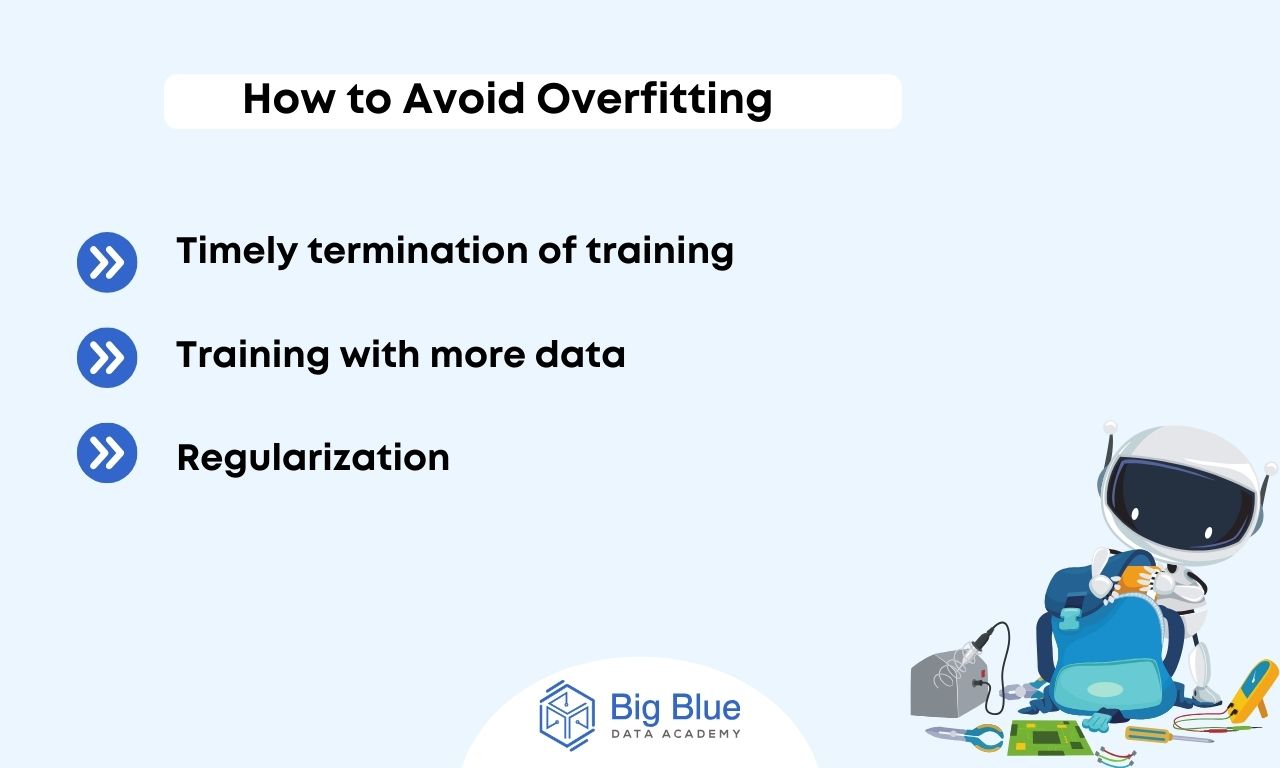Overfitting in Machine Learning: Guide (2024)
During the training of a model, Data Scientists and Machine Learning Engineers may encounter the situation of overfitting.
Although it is not a very pleasant scenario, it is a common phenomenon, and there are ways to detect and prevent it early.
So, in today's guide, we will delve into:
What overfitting is in machine learning
- How to detect overfitting
- How to prevent overfitting
- The difference between overfitting and underfitting
Let's start with a basic definition.
What is Overfitting in Machine Learning and Why Does it Happen?
Overfitting in Machine Learning is a common phenomenon where a model trained on a dataset fits precisely to the training data, struggling to make generalizations.
The generalization of a model is crucial for utilizing machine learning algorithms to make predictions and classify data.
When overfitting occurs, the model adapts too closely to the training data, capturing not only patterns but also noise and random fluctuations in that data.
As a result, the overfitted model does not perform well on new, unseen data because it essentially memorized the training dataset instead of making generalizations from it.
Overfitting happens for various reasons, such as:
- Small size of the training data, lacking sufficient samples to accurately represent all possible input data values.
- Training data containing noisy information, meaning data with errors or random fluctuations.
- High complexity of the model.
- Prolonged training of the model on a single dataset.
How Can You Detect Overfitting?
For a better understanding of a machine learning model's accuracy, regular checks of its suitability by ML Engineers are essential.
To detect overfitted models, it's crucial to test ML models on more data with a comprehensive representation of possible input values and data types.
A high error rate in test data is a significant indicator of overfitting.
Specifically, K-fold cross-validation is one of the most popular techniques for evaluating the model's accuracy.
In K-fold cross-validation, data is divided into k subsets by Data Scientists, also called folds.
The training process consists of a series of iterations, and after each evaluation, scores are averaged to estimate the overall model performance.
Now that we've seen what overfitting is and how to detect it, let's explore how to avoid it.
How Can You Avoid Overfitting?
Overfitting is more likely to occur with non-parametric and non-linear models.
While theoretically using a linear model could help avoid overfitting, most real-world problems are not linear.
To avoid overfitting, the following methods can be employed:

Technique #1: Timely termination of training
Stopping training at the right moment, before the ML model learns noise in the data, is a crucial technique to prevent overfitting.
Achieving the right timing is essential to avoid stopping the model from training too early, leading to underfitting, which we'll discuss later.

Technique #2: Training with more data
If possible, collecting more data is essential.
After all, the more data a model is trained on, the better it can generalize.
Technique #3: Regularization
Techniques like L1 and L2 regularization can help prevent overfitting by imposing penalties on certain model parameters more likely to cause overfitting.
Let's now see what underfitting is that we talked about earlier, and of course how it differs from overfitting.
How Overfitting Differs from Underfitting
Both overfitting and underfitting lead to poor predictions for new data, but for different reasons.
While overfitting is the excessive adaptation of a model to training data, underfitting is the opposite.
Underfitting occurs when a model cannot identify a meaningful relationship between input and output data.
Underfitted models arise when not trained for an adequate period on a large number of data points.
Ramping Up
We've extensively discussed overfitting, why it happens, how to detect it, and essential methods to avoid it.
The field of Data Science and Machine Learning offers many opportunities for professional growth and well-paying job positions.
Thus, if you are intrigued to learn more about the fascinating world of Data Science and all the emerging trends surrounding it, follow us and we will keep you posted!


.jpg)